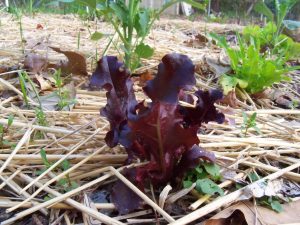Once we get through the blustery days of March, it becomes much easier to get the whole family outdoors. When the south winds start to blow, be prepared to garden with the kiddos. We’ve heard over and over again that children are more likely to eat vegetables if they have a hand in growing them, and there’s no better time to get started than spring, when everyone is already energized by the change in seasons.
The key to getting started is preparation. When you are ready to plant, you want to plant, not go shopping for supplies. If you want to be ready to go when the weather is right, make sure you have your plans in place and all the supplies you may need.
- Location: Where do you want to plant your spring veggies? Can you set aside a section of a flower bed to plant? How about some containers? Most spring vegetables and herbs can be grown in containers, so if you don’t want to work up soil, a large container will do. If possible, select a location in full-sun to provide the best environment for your plants.
- Soil amendments: Healthy plants require healthy soil, so purchasing organic compost Is necessary. Add a ½ inch layer to the top of your garden space before planting, gently working it into the top few inches of your soil with a shovel. Better yet, get those kiddos out there with their tools and let them play in the dirt! For container-growing, fill containers with equal parts organic compost, high-quality garden soil and ve

Leaf lettuce is beautiful and easy to grow. rmiculite.
- Select seeds and plants: Know what you want to grow before you get to the garden center. The available choices can be overwhelming and novice gardeners may not know what is appropriate for the season. Select just a few cool season crops, think green, leafy veggies. Kale, lettuce and swiss chard are easy and quick to grow from seed, as well as some root veggies like radishes and turnips. When it’s time for summer planting we will talk about growing garden favorites like tomatoes, cucumbers and peppers. It’s a bit early for them yet.
With all supplies on-hand, you are ready to plant when the next beautiful day comes along. Sow seeds according to the spacing recommendations on the seed package and always water well after planting. Check for seed germination frequently, and water regularly so tiny seedlings don’t dry out.
Encourage your children to keep a garden journal and record growth according to their age. I am a big fan of botanical prints, particularly those drawn by tiny hands. What a fun way to not only record your garden growth, but also record your child’s development. If I could encourage you to do anything it is this: Enjoy the process. Weeds will grow and critters will feast, but seeds are cheap and it’s fun to play in the dirt. If things go wrong, just plant more seeds!
Tiffany Selvey is a Master Gardener who writes about her passion for growing, cooking, and living naturally atwww.Songbird-Gardens.com. When she’s not elbow deep in soil, she enjoys raising a very active son, laughing with her husband, and wrangling their pets. Follow Tiffany’s gardening adventures on facebook, instagram and on twitter.
